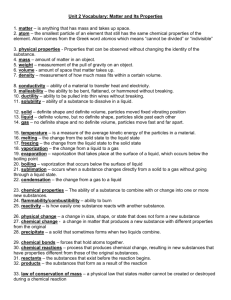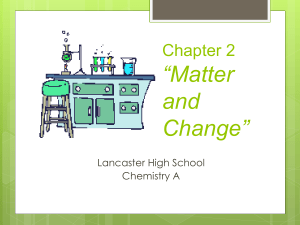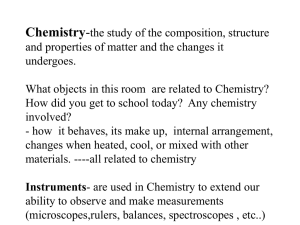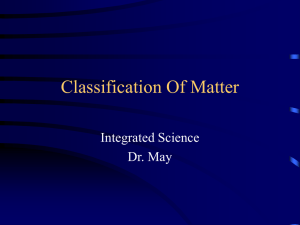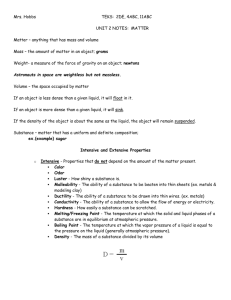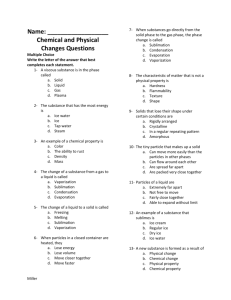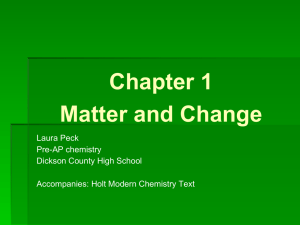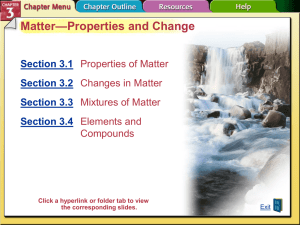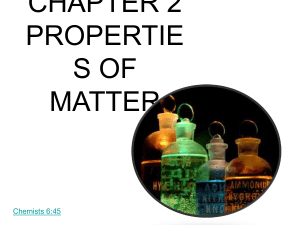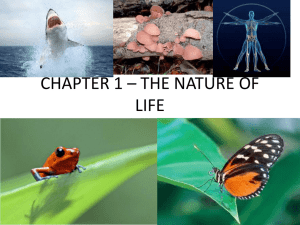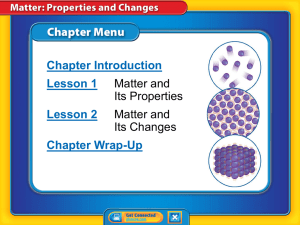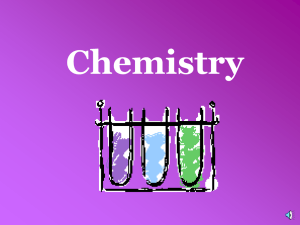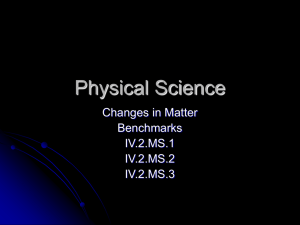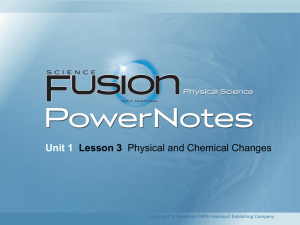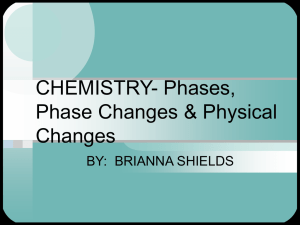File
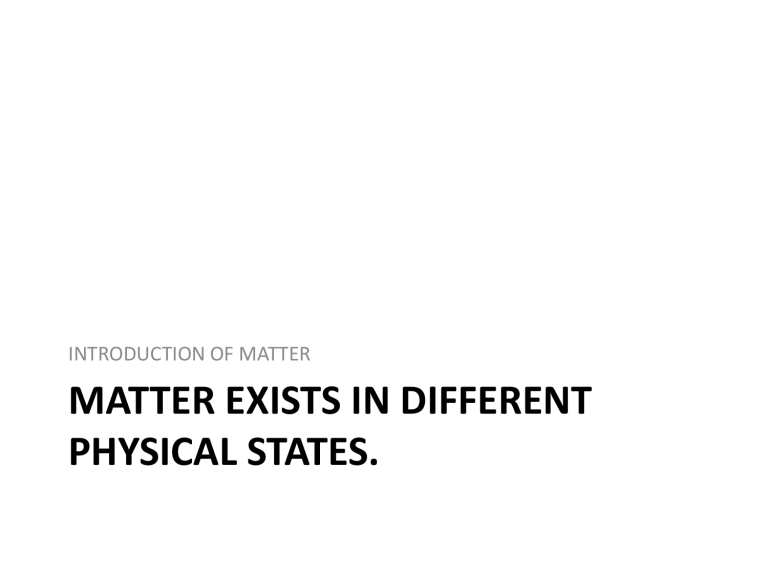
INTRODUCTION OF MATTER
MATTER EXISTS IN DIFFERENT
PHYSICAL STATES.
Particle arrangement and motion determine the state of matter.
• States of matter are the different
___________ in which matter can exist.
• The familiar states are ________, __________, and _________.
• When a substance changes from one form to another, the ________________ of the molecules change.
Solid, liquid, and gas are common states of matter.
• A _______________is a substance that has a definite volume and a definite shape.
• The particles are __________together and can
__________against each other while still in the same place.
Image from: http://www.dorlingkindersley-uk.co.uk/static/html/clipart/clipart_home.html
• A _____________has a definite volume, but does not have a definite shape. The particles are attracted to one another and are close together. They are not fixed in place and can move from one place to another.
Image from: http://www.dorlingkindersley-uk.co.uk/static/html/clipart/clipart_home.html
• A __________has no definite volume or shape. A gas can take on both the shape and the volume of a container. Gas particles are not close together and can move easily in any direction.
Image from: http://www.dorlingkindersley-uk.co.uk/static/html/clipart/clipart_home.html
The speed at which gas molecules move depends on the temperature of the gas.
• _____________is a measure of the average amount of kinetic energy(mass and speed) of the particles in an object.
Gas Behavior
• Gas molecules move __________at higher temperatures.
• The _________, __________, and
_________________of a gas are related to one another, and changing on can change the others.
Two laws govern gases.
• ____________ law states that for a fixed amount of a gas kept at a constant temperature, pressure and volume are indirectly related. (One increases, the other decreases).
• ____________ law states for a fixed amount of a gas kept at a constant pressure, temperature and volume are directly related.
(One increases, the other increases).
Use these words to fill-in the next page.
• Definite shape
• Definite volume
• Atoms
• Matter
• Particles move quickly
• Particles close together
• No definite volume
• No definite shape
• Particles slide past each other
• We will use these words later--
– Sublimation
– Boiling
– Freezing
– Condensation
– Melting
– Evaporation
Properties of Matter
MATTER HAS OBSERVABLE
PROPERTIES
Matter has observable properties.
• The characteristics of a substance that can be observed without changing the identity of the substance are called
_________________properties.
• Examples: color, shape, size, texture, volume, and mass
Physical Changes
• A _________change is a change in any physical _____________of a substance.
• Example: stretching a rubber band
Chemical Properties and Changes
• ________________properties describe how substances can form ______substances.
• A chemical change is the change of one substance into ____________substance.
Examples of chemical changes:
• Burning wood, tarnished copper, dropping an antacid into water, rusted iron
Signs of a Chemical Change
• Production of an _________– a rotting egg produces the smell of sulfur
• Change in _______________– burning wood increases temperature
• Change in ____________– fruit may change color when it ripens
• Formation of _________– an antacid that comes in contact with water starts to bubble.
• Formation of a ________– shells of clams and mussels are precipitates
Put a GREEN circle around the physical changes and a RED box around the chemical changes .
PROPERTIES OF MATTER
PROPERTIES ARE USED TO IDENTIFY
SUBSTANCES.
Substances have characteristic properties.
• We can identify __________ substances by comparing their physical properties with the physical properties of known substances.
• Texture, shape, and color are all physical properties that you use all of the time to
____________and sort objects.
Properties Used for Identifying
Substances
• ______________can be used to identify substances.
– Example: You could see a difference between a kilogram of liquid soap and a kilogram of honey by measuring their densities.
• ___________is a measure of how much of a substance dissolves in a given volume of liquid.
• Solubility can be used to identify substances.
• Some substances ____________ electricity better than others.
– This is why conductivity can be used to identify a substance.
• Some substances are attracted to
__________, so we can use magnets to identify substances.
PROPERTIES OF MATTER
CHANGES OF STATE ARE PHYSICAL
CHANGES.
Matter can change from one state to another.
• When matter changes from one state to another, the substance itself does not change.
• Changing state is a ________change.
Melting
• ________________is a process by which a solid becomes a liquid.
• The ______________temperature at which a substance begins to melt is called its melting point.
Freezing
• ___________is the process by which a liquid becomes a solid.
• The temperature at which a specific liquid becomes a solid is called the freezing
_________.
Evaporation
• __________is a process by which a liquid becomes a gas.
Sublimation
• __________is a process in which a solid turns directly into a gas without becoming a liquid first.
• Example: Dry ice is frozen carbon dioxide.
Boiling
• ___________is a process by which a liquid becomes a gas.
• Boiling occurs when a _________reaches a certain temperature called the boiling point.
Condensation
• The process by which a gas changes its state to become a liquid is called ______________.
